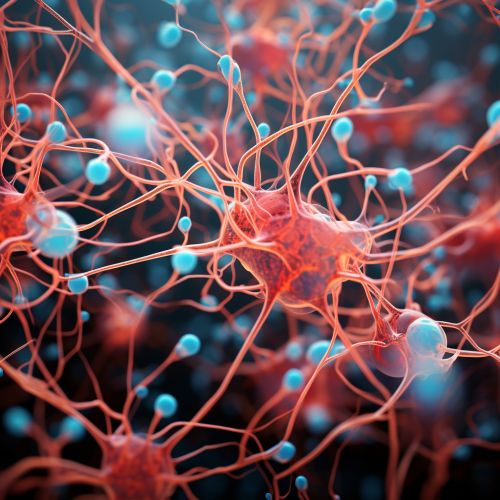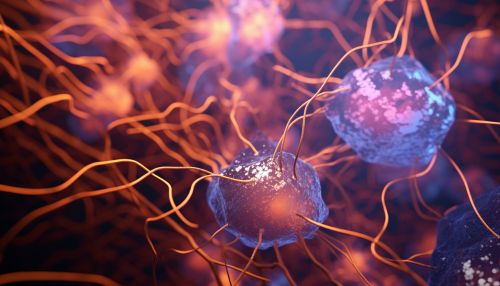Microglia
Overview
Microglia are a type of glial cell that are the resident macrophages of the brain and spinal cord, and thus act as the first and main form of active immune defense in the central nervous system (CNS). As the primary immune cells of the CNS, microglia are involved in a variety of physiological and pathological processes, from maintaining homeostasis to responding to injury or disease.


Origin and Development
Microglia originate from yolk sac progenitors, not neural progenitors, and populate the CNS during embryonic development. They are derived from primitive myeloid progenitors and are unique among myeloid cells in terms of their longevity and their capacity for self-renewal.
Morphology
Microglia are small relative to neurons and other glia, but they are highly dynamic and can rapidly extend and retract their processes. They have a small cell body with several long, thin processes that extend out in all directions. When the CNS is healthy, microglia have a ramified morphology, meaning they have many branching processes. In response to injury or disease, microglia can become activated and change their morphology to an amoeboid shape.
Functions
Microglia perform a variety of functions in the CNS. They are involved in phagocytosis, antigen presentation, and cytokine production. They also play a role in synaptic pruning during CNS development and in response to injury or disease. Additionally, microglia can secrete a variety of substances that influence neuronal function and survival.
Role in Disease
Microglia are implicated in a number of neurological diseases, including Alzheimer's disease, Parkinson's disease, Multiple sclerosis, and Amyotrophic lateral sclerosis. In these diseases, microglia can become chronically activated and cause neuroinflammation, which can lead to neuronal damage and disease progression.
Research
Microglia are a major focus of research in neuroscience and neurology, as they are implicated in numerous neurodegenerative diseases. Understanding the functions of microglia and how they contribute to disease could lead to new therapeutic strategies for a variety of neurological disorders.
